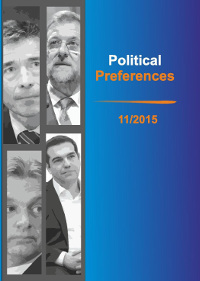Cichosz M. (2009), Metody analizy i diagnostyki rynku politycznego, [in:] W. Jabłoński, L. Sobkowiak (eds.) Marketing polityczny w teorii i praktyce, Wrocław: Wydawnictwo Uniwersytetu Wrocławskiego.
Google Scholar
Cichosz M. (2005), Wizerunek lidera politycznego, [in:] M. Jeziński (ed.), Marketing polityczny – w poszukiwaniu wyborczego sukcesu, Toruń.
Google Scholar
Cwalina W., Falkowski A. (2005), Marketing polityczny. Perspektywa psychologiczna, Gdańsk.
Google Scholar
Dobek – Ostrowska B. (2006), Komunikowanie polityczne i publiczne, Warszawa: Wydawnictwo Naukowe PWN.
Google Scholar
Heller W, Mershon C. (2009), Political Parties and Legislative Party Switching, New York: Mcmillan.
Google Scholar
Ilciów A. (2013), Tożsamość partii politycznej w procesie komunikowania politycznego, „Atheneum Polskie Studia Politologiczne”, no. 37.
Google Scholar
Jeziński M. (2004), Marketing polityczny a procesy akulturacyjne. Przypadek III Rzeczpospolitej, Toruń: Wydawnictwo Naukowe Uniwersytetu Mikołaja Kopernika.
Google Scholar
Kolczyński M. (2008), Strategie komunikowania politycznego, Katowice: Wydawnictwo Uniwersytetu Śląskiego.
Google Scholar
Kołodziej Sz. (2015), Wizerunek polityczny Andrzeja Dudy w prezydenckiej kampanii wyborczej Prawa i Sprawiedliwości w 2015 roku, Studia Politicae Universitatis Silesiensis, in print.
Google Scholar
Leary M. (2000), Wywieranie wrażenia na innych: o sztuce autoprezentacji, Gdańsk: Gdańskie Wydawnictwo Psychologiczne.
Google Scholar
Mazur M., Turska-Kawa A. (2009), Modernizacja i profesjonalizacja kampanii wyborczych. Kampania prezydencka w USA w 2008 roku, „Studia Politicae Universitatis Silesiensis”, Tom VI.
Google Scholar
Mistewicz E., Karnowski M. (2010), Anatomia władzy, Warszawa: Wydawnictwo Czerwone i Czarne.
Google Scholar
Nimmo D., Savage R. (1976), Candidates and Their Images: Concepts, Methods and Findings, Pacific Palisades, CA: Goodyear.
Google Scholar
Norris P. (2000), A Virtuous Circle: Political Communication in Post Industrial Democracies, New York: Cambridge University Press.
Google Scholar
Pietraś Z. (1998), Decydowanie polityczne, Warszawa: Wyd. PWN.
Google Scholar
Sempach M. (2013), Marketingowy proces budowania wizerunku nowoczesnej zorientowanej rynkowo organizacji politycznej, „Rocznik Politologiczny”, no. 8-9.
Google Scholar
Tunkis P., Safety in Numbers: Group Linkages and the Persistence of Party Switching in Poland, Electoral Control Workshop II. www.electoralcontrol.com (11.09.2015).
Google Scholar



 10.31261/polpre
10.31261/polpre